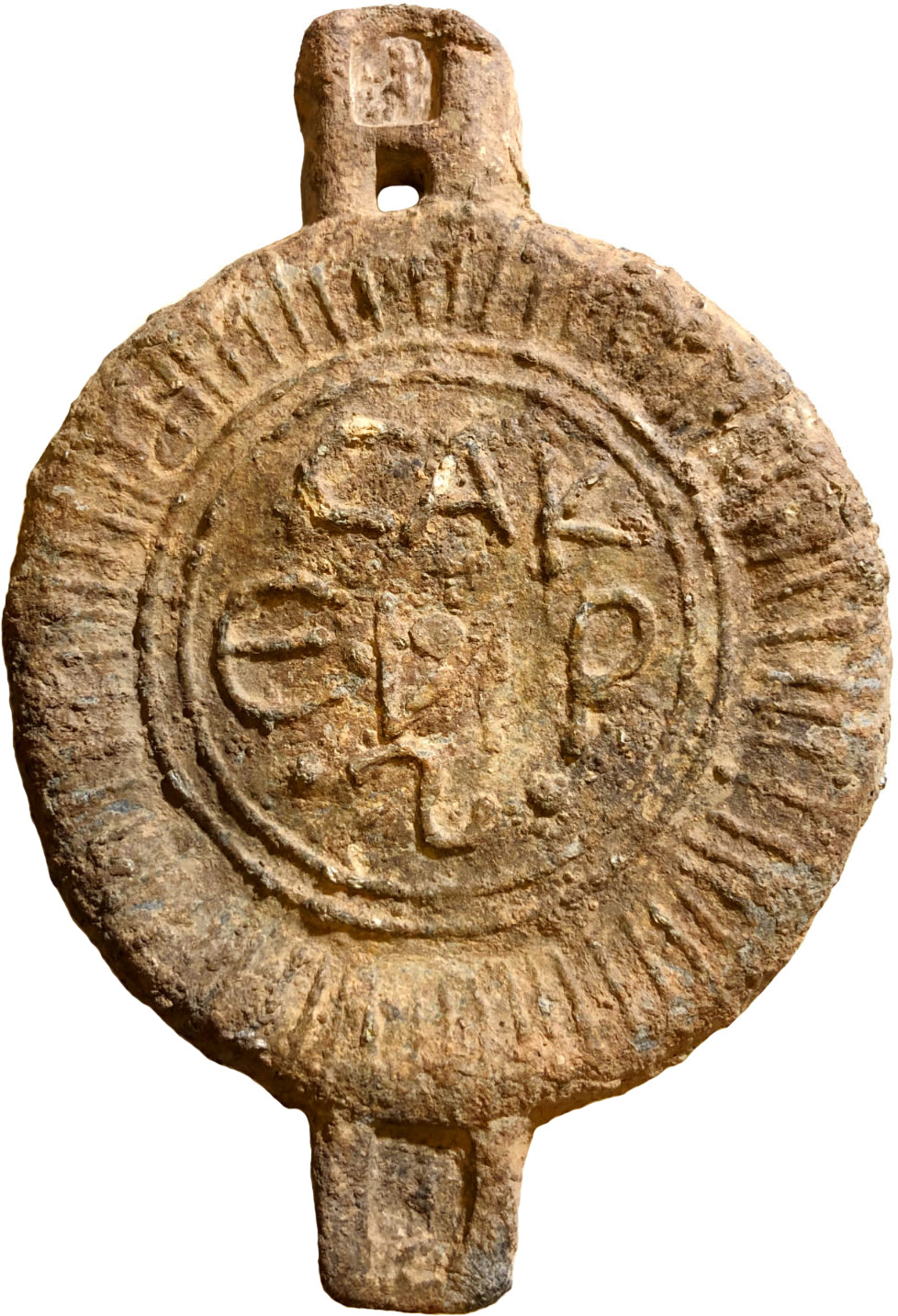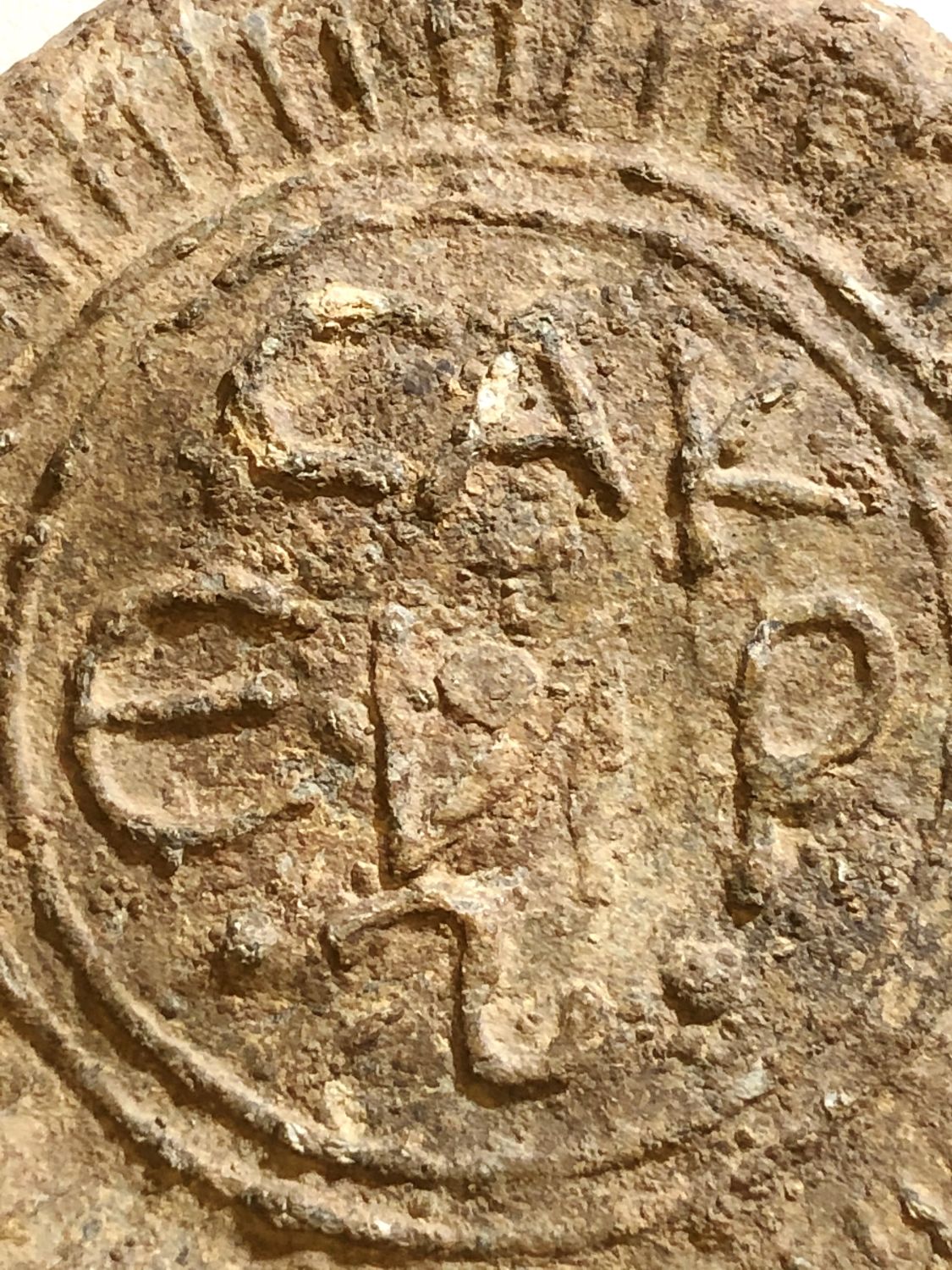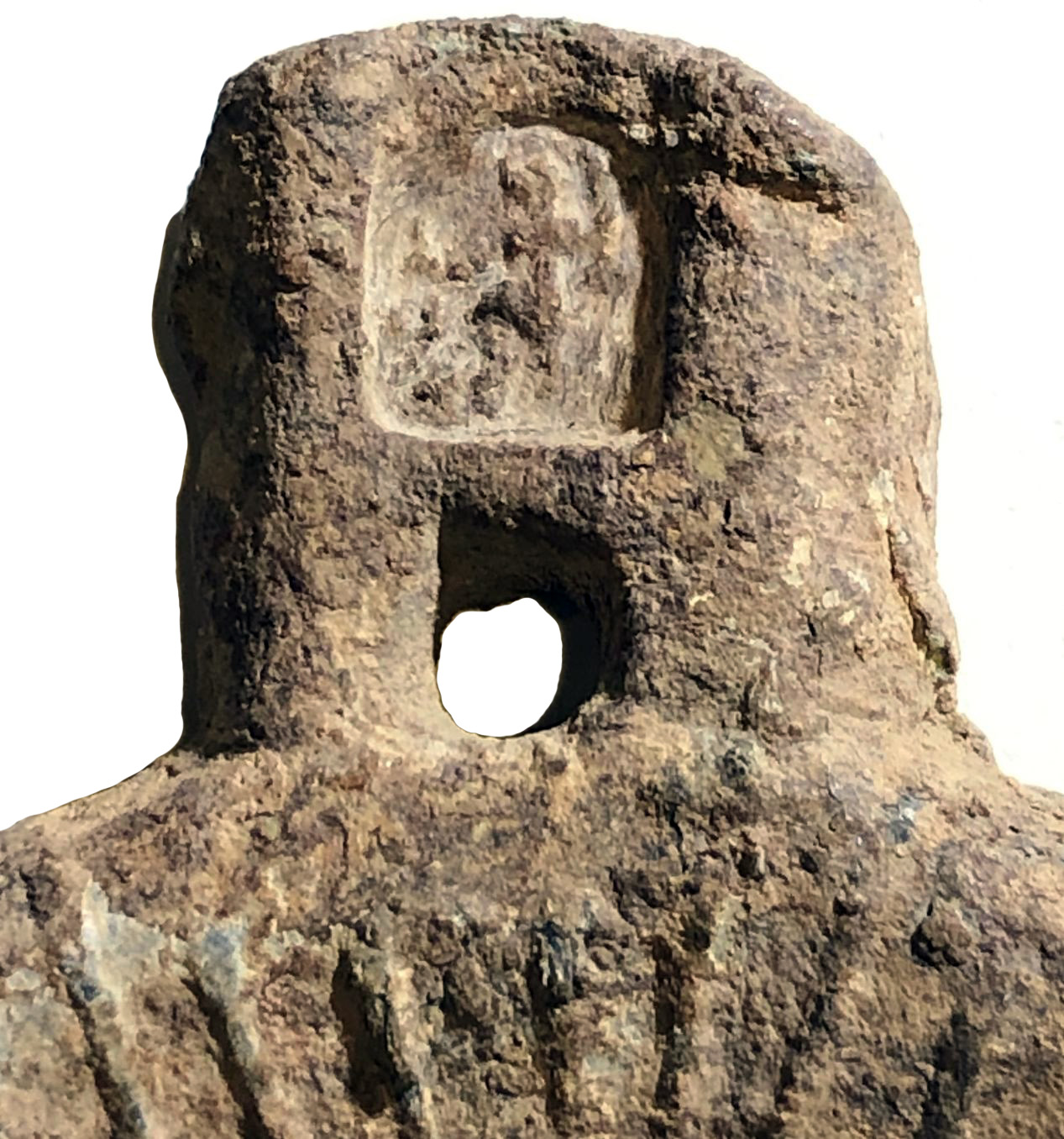
-
Copyright credit: Auction Archaeological Center 2023

-
Copyright credit: Auction Archaeological Center 2023

-
Copyright credit: Auction Archaeological Center 2023

ARCHAEOLOGICAL DESCRIPTION OF THE WEIGHT
Authority
Mint
Denomination
Material
Lead
Manufacture
Cast
Shape
Disc or similar (ellipse, etc.)
Length
13.50 cm
Width
13.50 cm
Height
- cm
Metrology
| Mass (g) | Mass (grain) | Date of measurement | Reference | fragmented | cleaned | reference weight |
|---|---|---|---|---|---|---|
| 334.00 | - | - | Auction Archaeological Center 2023 | No | No | Yes |
Iconography
| Symbol | Technique | Direction | Position | Number | Synecdoche |
|---|---|---|---|---|---|
| Male figure | Stamped / Countermarked | FACING | Standing |
Wear
Corrosion
Handle
Yes
Suspension hole
Yes
Recarved mould
No
Recarved weight
No
Intentionally destroyed
No
Archaeological description
Auction Archaeological Center 2023: A Hellenistic lead weight. 2nd-1st century BCE. 334 gr, 13.5 cm. Depicting in the center a Greek inscription reading: CAK / EͶP which is surrounded by a ladder frame. The two small handles are impressed by a seal depicting a standing figure. In very good condition and rare.
Delmeulle Matthieu 16/10/2023 : This weight could be attributed to the Southern Levant under Roman domination. During the Roman period, the characteristics of Seleucid standardisation gradually disappeared in favour of greater variation. Admittedly, most of the weights from Greek cities retained the appearance of a thin lead plate with a protruding edge. However, the shape of these artefacts was no longer uniformly quadrangular throughout the Southern Levant. Circular and more complex shapes, such as hexagons, are also attested. Similarly, the metrological system put in place by Antiochos IV, based on a 128-drachma mina, seems to have given way to a multitude of systems, the complex intricacies of which are not yet fully understood by researchers.
In this case, several observations suggest that weight 17380 may have been produced in the Gaza region between the 2nd century AD and the beginning of the 4th century AD. First, similar small quadrangular or circular countermarks can be seen on weights whose manufacture is attributed to Gaza or Raphia and dated to between 100 and the early 4th century AD (CIIP III; Kushnir-Stein, A. 2004). Comparanda with the countermark can be found in CIIP III (CIIP III 2603 and CIIP III 2609). Secondly, the shapes of the epsilon, ny and rho are also well attested on weights from the same period attributed to Gaza (for example: CIIP III 2606). Finally, the mass of the artefact, around one Roman pound, was probably always more widespread in the Southern Levant, especially during the 2nd and 3rd centuries (Delmeulle forthcoming). Poinçon supérieur: personnage assis vers la gauche, sceptre dans main gauche, statuette dans main droite bras tendu (Zeus tenant Nikè??). Poinçon inférieur: Tychè de Césarée? sur proue? vers la gauche. (GF)
Delmeulle Matthieu 16/10/2023 : This weight could be attributed to the Southern Levant under Roman domination. During the Roman period, the characteristics of Seleucid standardisation gradually disappeared in favour of greater variation. Admittedly, most of the weights from Greek cities retained the appearance of a thin lead plate with a protruding edge. However, the shape of these artefacts was no longer uniformly quadrangular throughout the Southern Levant. Circular and more complex shapes, such as hexagons, are also attested. Similarly, the metrological system put in place by Antiochos IV, based on a 128-drachma mina, seems to have given way to a multitude of systems, the complex intricacies of which are not yet fully understood by researchers.
In this case, several observations suggest that weight 17380 may have been produced in the Gaza region between the 2nd century AD and the beginning of the 4th century AD. First, similar small quadrangular or circular countermarks can be seen on weights whose manufacture is attributed to Gaza or Raphia and dated to between 100 and the early 4th century AD (CIIP III; Kushnir-Stein, A. 2004). Comparanda with the countermark can be found in CIIP III (CIIP III 2603 and CIIP III 2609). Secondly, the shapes of the epsilon, ny and rho are also well attested on weights from the same period attributed to Gaza (for example: CIIP III 2606). Finally, the mass of the artefact, around one Roman pound, was probably always more widespread in the Southern Levant, especially during the 2nd and 3rd centuries (Delmeulle forthcoming). Poinçon supérieur: personnage assis vers la gauche, sceptre dans main gauche, statuette dans main droite bras tendu (Zeus tenant Nikè??). Poinçon inférieur: Tychè de Césarée? sur proue? vers la gauche. (GF)
Autopsy
No
INSCRIPTION
| Language | Technique | Legend type |
|---|---|---|
| Greek | Relief | Date, Unidentified |
Fac simile
CΑΚ
Ε
Edition
ΣΑΚ | ΕΝΡ.
Monogram
ARCHAEOLOGICAL CONTEXT
Findspot (region)
Findspot (site)
context
CIRCUMSTANCES OF ACQUISITION
Region
City
Date of first acquisition
Oct. 2, 2023
circumstances
Antiquities trade.
DATING OF THE WEIGHT
Curatorial Section
GREEK
,
ROMAN
Time frame
FROM
1
TO
300
Comments on Chronology
COLLECTION HISTORY
Collection
| Name | Date of acquisition | Inventory number |
|---|---|---|
| Antiquities Trade | Oct. 2, 2023 | None |
Bibliography
| Reference | Page/Column | Reference (number) | Plate / Figure | Comment |
|---|---|---|---|---|
| Auction Archaeological Center 2023 | None | 445 | fig. | None |
VARIA
Additional comment
Compare with https://pondera.uclouvain.be/artifact/11916/
Permalink
External link